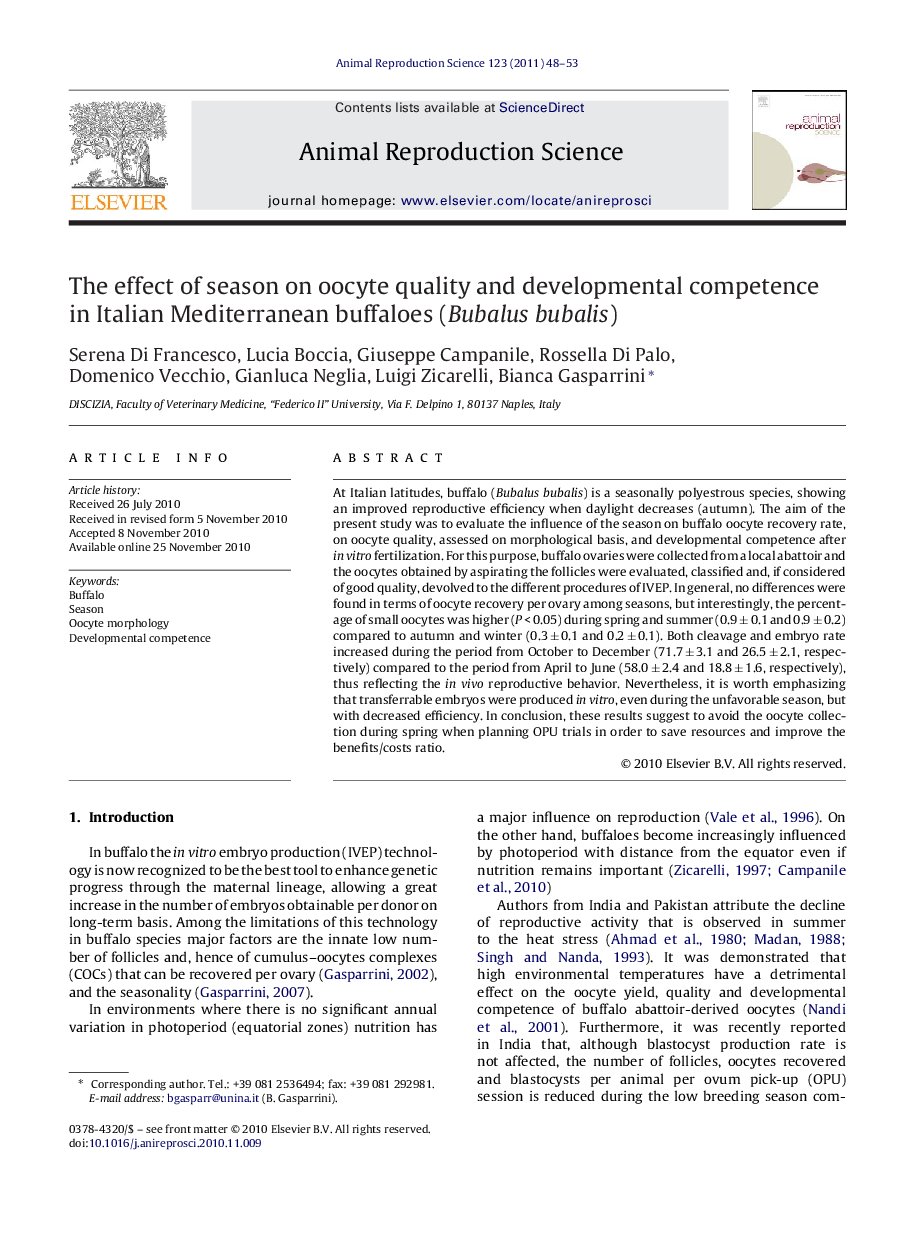| Article ID | Journal | Published Year | Pages | File Type |
|---|---|---|---|---|
| 2073504 | Animal Reproduction Science | 2011 | 6 Pages |
At Italian latitudes, buffalo (Bubalus bubalis) is a seasonally polyestrous species, showing an improved reproductive efficiency when daylight decreases (autumn). The aim of the present study was to evaluate the influence of the season on buffalo oocyte recovery rate, on oocyte quality, assessed on morphological basis, and developmental competence after in vitro fertilization. For this purpose, buffalo ovaries were collected from a local abattoir and the oocytes obtained by aspirating the follicles were evaluated, classified and, if considered of good quality, devolved to the different procedures of IVEP. In general, no differences were found in terms of oocyte recovery per ovary among seasons, but interestingly, the percentage of small oocytes was higher (P < 0.05) during spring and summer (0.9 ± 0.1 and 0.9 ± 0.2) compared to autumn and winter (0.3 ± 0.1 and 0.2 ± 0.1). Both cleavage and embryo rate increased during the period from October to December (71.7 ± 3.1 and 26.5 ± 2.1, respectively) compared to the period from April to June (58.0 ± 2.4 and 18.8 ± 1.6, respectively), thus reflecting the in vivo reproductive behavior. Nevertheless, it is worth emphasizing that transferrable embryos were produced in vitro, even during the unfavorable season, but with decreased efficiency. In conclusion, these results suggest to avoid the oocyte collection during spring when planning OPU trials in order to save resources and improve the benefits/costs ratio.
